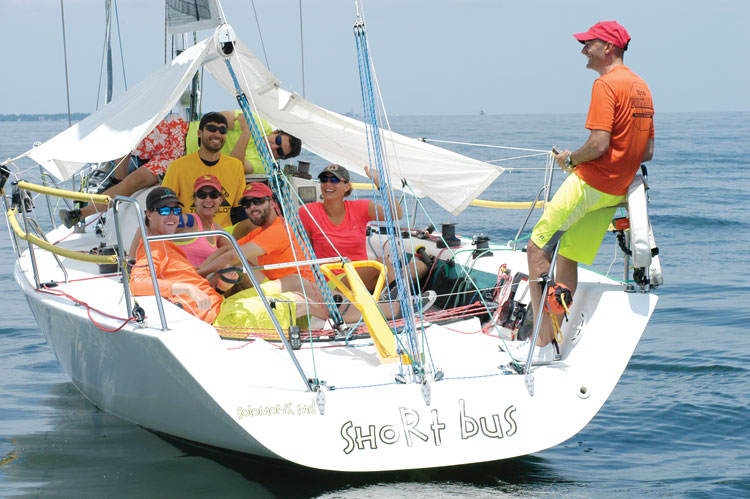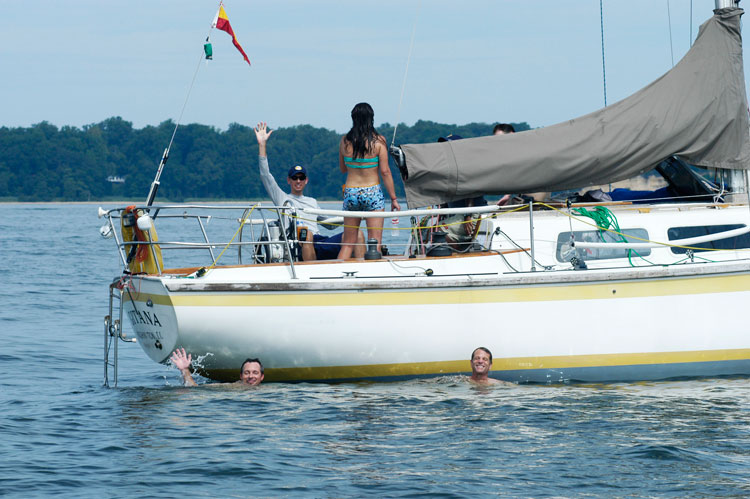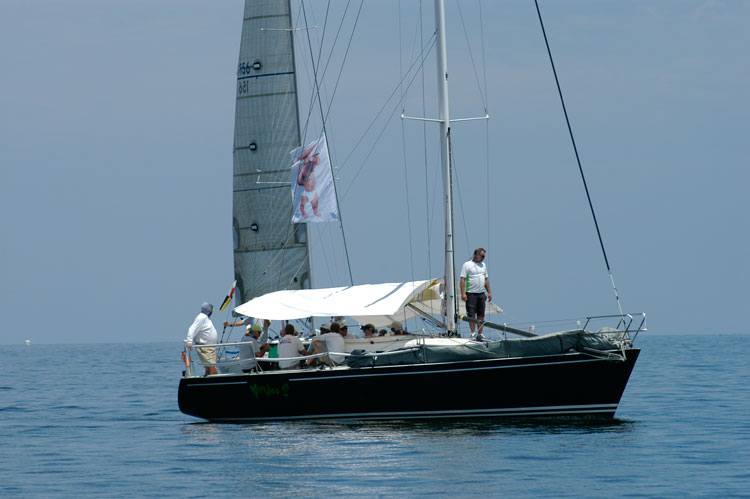Keeping Cool While Sailing in the Dog Days
As we sailors slog through the hazy, hot, and humid Chesapeake Bay dog day weather, it’s worth taking a few moments to consider a “cooling plan” for your sailboat and crew.

As best you can, monitor your activity level, planning breaks from strenuous activity when possible. This may mean cruising in the morning or evening, and relaxing or swimming during the middle of the day. Outfit your boat with a bimini or temporary sun cover and equip the forward hatch with a windscoop. Inside the cabin, block the sun by drawing curtains or draping towels over the windows.
Pack and stow a cooler with ice, water, snacks, and perhaps sports drinks. Keeping sodium, potassium, and other electrolytes at their correct levels is important. Hydrate early and often, drinking before you feel thirst. And (we don’t mean to spoil the party, but…) limiting alcohol and caffeine consumption is important. Both are diuretics and cause fluid loss
.
Your clothing is a tool for sun protection. Wear items that are light-colored and loose-fitting. They allow sweat to evaporate off the skin (which cools you) before the sun dries it away too quickly. Don’t forget a hat, and maybe even a buff (a lightweight tube that protects the head, neck and face, also called a sun mask). Wetting down said hat or tying a wet bandana around your neck will help too. When the ice has melted, some man-made fabrics can provide a little relief. When wet, Frogg Togg brand towels (and others like them) feel considerably cooler than the outside air, even on the hottest day.
Although we’re focusing here on staying cool in the heat, this seems to be a good place to mention sunglasses and sunscreen. Long-term sun exposure may contribute to cataracts. Polarized sunglasses will provide protection and cut down on glare off the water. With regard to sunscreen, our best advice is the same as for water consumption: early and often.

Heat fatigue, heat syncope (sudden dizziness after prolonged exposure to the heat), heat cramps, heat exhaustion, and heat stroke are common forms of hyperthermia. Health-related factors may increase risk, and age sometimes plays a factor (age-related changes to skin can impair blood circulation and efficient sweating). If you suspect that someone is suffering from a heat-related illness, have them lie down in a shady or air-conditioned place, sponge them with cool water or apply cold, wet cloths to wrists, neck, armpits, and groin. Offer fluids or fruit.
Heat stroke occurs when the body temperature increases significantly (generally above 104 degrees Fahrenheit). Symptoms may include confusion or combativeness, strong rapid pulse, lack of sweating, dry flushed skin, faintness, staggering, or coma. Seek immediate emergency medical attention by calling 911 or hailing the Coast Guard.




